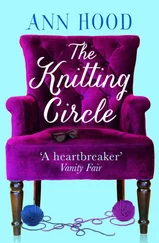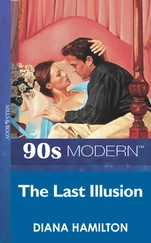Bruce Hood - The Self Illusion
Здесь есть возможность читать онлайн «Bruce Hood - The Self Illusion» весь текст электронной книги совершенно бесплатно (целиком полную версию без сокращений). В некоторых случаях можно слушать аудио, скачать через торрент в формате fb2 и присутствует краткое содержание. ISBN: , Издательство: Constable & Robinson, Жанр: Старинная литература, на английском языке. Описание произведения, (предисловие) а так же отзывы посетителей доступны на портале библиотеки ЛибКат.
- Название:The Self Illusion
- Автор:
- Издательство:Constable & Robinson
- Жанр:
- Год:неизвестен
- ISBN:9781780331379
- Рейтинг книги:5 / 5. Голосов: 1
-
Избранное:Добавить в избранное
- Отзывы:
-
Ваша оценка:
- 100
- 1
- 2
- 3
- 4
- 5
The Self Illusion: краткое содержание, описание и аннотация
Предлагаем к чтению аннотацию, описание, краткое содержание или предисловие (зависит от того, что написал сам автор книги «The Self Illusion»). Если вы не нашли необходимую информацию о книге — напишите в комментариях, мы постараемся отыскать её.
The Self Illusion — читать онлайн бесплатно полную книгу (весь текст) целиком
Ниже представлен текст книги, разбитый по страницам. Система сохранения места последней прочитанной страницы, позволяет с удобством читать онлайн бесплатно книгу «The Self Illusion», без необходимости каждый раз заново искать на чём Вы остановились. Поставьте закладку, и сможете в любой момент перейти на страницу, на которой закончили чтение.
Интервал:
Закладка:
Notes
Prologue: The Reflected Self
1. N. Dietrich, The Amazing Howard Hughes (London: Hodder Fawcett, 1972).
2. The notion of the ‘I’ and the ‘me’ comes from William James’s Principles of Psychology (Henry Holt & Company, M. 1890).
3. P. Ricoeur, Oneself as Another (Chicago, IL: University of Chicago Press, 1992).
4. G. Strawson, ‘The self’, Journal of Consciousness , 4 (1997), 405–28.
5. D. Hume, A Treatise of Human Nature , Book 1, part 4, section 6.
6. D. Parfit, ‘Divided minds and the nature of persons’, in C. Blakemore and S. Greenfield (eds), Mindwaves (Oxford: Blackwell, 1987 pp.1a–26).
7. D. Chalmers, ‘Facing up to the problem of consciousness’, Journal of Consciousness Studies , 3 (1995), 200–219.
8. D.C. Dennett, Consciousness Explained (Boston, MA: Little, Brown and Co, 1991).
9. C. H. Cooley, Human Nature and the Social Order (New York, NY: Scribner’s, 1902).
10. D.T. Gilbert and P.S. Malone, ‘The correspondence bias’, Psychological Bulletin, 117 (1995), 21-38.
1 The Most Wondrous Organ
1. F. A.C. Azevedo, L. R. B. Carvalho, L. T. Grinberg, J. M. Farfel, E. E. L. Ferretti, R. E. P. Leite, W. Jacob Filho, R. Lent and S. Herculano-Houzel, ‘Equal numbers of neuronal and non-neuronal cells make the human brain an isometrically scaled-up primate brain’, Journal of Comparative Neurology , 513 (2009), 532–41. This is the most recent analysis of the human neural architecture. They estimated that there were eighty-five billion non-neuronal cells and eighty-six billion neuronal cells.
2. C. E. Shannon, ‘A mathematical theory of communication’, Bell System Technical Journal , 27 (1948), 379–423 and 623–56.
3. Binary code was first introduced by the German mathematician and philosopher Gottfried Wilhelm Leibniz during the seventeenth century. Binary code works well because it works with only two states of ‘on’ and ‘off’, which is ideally suited for electrical systems.
4. E. Ruppin, E. L. Schwartz and Y. Yeshurun, ‘Examining the volume-efficiency of the cortical architecture in a multi-processor network model’, Biological Cybernetics , 70:1 (1993), 89–94.
5. M. Abeles, Corticonics: Neural Circuits of the Cerebral Cortex (Cambridge: Cambridge University Press, 1991).
6. M. A. Arib, The Handbook of Brain Theory and Neural Networks (Cambridge, MA: MIT Press, 2002).
7. The number of atoms in the observable universe is estimated to be around 10 81. I am indebted to Dan Wolpert for providing me with this bizarre mathematical comparison.
8. W. Penfield, The Mystery of the Mind (Princeton, NJ: Princeton University Press, 1975).
9. P. MacLean, The Triune Brain in Evolution: Role of Paleocerebral Functions (New York, NY: Plenum, 1990).
10. Azevedo et al. (2009).
11. J. Atkinson, The Developing Visual Brain (Oxford: Oxford University Press, 2000).
12. B. M. Hood, ‘Shifts of visual attention in the human infant: A neuroscientific approach’, in L. Lipsitt and C. Rovee-Collier (eds), Advances in Infancy Research , vol. 9 (Norwood, NJ: Ablex, 1995), 163–216.
13. A. Diamond, ‘Neuropsychological insights into the meaning of object concept development’, in S. Carey and R. Gelman (eds.), The Epigenesis of Mind: Essays on Biology and Cognition (Cambridge, MA: MIT Press, 1991), 433–72.
14. F. Bertossa, M. Besa, R. Ferrari and F. Ferri, ‘Point zero: A phenomenological inquiry into the seat of consciousness’, Perceptual and Motor Skills , 107 (2008), 323–35.
15. P. Rakic, ‘Intrinsic and extrinsic determinants of neo-cortical parcellation: A radial unit model’, in M. H. Johnson, Y. Munakata and R. Gilmore (eds), Brain Development and Cognition: A Reader (2nd ed., Oxford: Blackwell, 2002), 57–82.
16. Y. Brackbill, ‘The role of the cortex in orienting: Orienting reflex in an anencephalic human infant’, Developmental Psychology , 5 (1971), 195–201.
17. A. J. DeCasper and M. J. Spence, ‘Prenatal maternal speech influences newborns’ perception of speech sounds’, Infant Behavior and Development , 9 (1986), 133–150; J. A. Mennella, C. P. Jagnow and G. K. Beauchamp, ‘Prenatal and postnatal flavor learning by human infants’, Pediatrics 107:6 (2001), E88; P. G. Hepper, ‘An examination of fetal learning before and after birth’, Irish Journal of Psychology , 12:2 (1991), 95–107.
18. M. H. Johnson, Developmental Cognitive Neuroscience (Oxford: Wiley-Blackwell, 2011).
19. J. L. Conel, The Postnatal Development of the Human Cerebral Cortex , Vols I–VIII (Cambridge, MA: Harvard University Press, 1939–67).
20. W. T. Greenough and J. E. Black, ‘Induction of brain structures by experience: Substrates for cognitive development’, in M. Gunnar and C. Nelson (eds), Minnesota Symposium on Child Psychology: Vol. 24. Developmental Behavioral Neuroscience (Hillsdale, NJ: Erlbaum (1992)), 155–200.
21. P. R. Huttenlocher, C. de Courten, L. G. Garey and H. Van der Loos, ‘Synaptogenesis in human visual cortex. Evidence for synapse elimination during normal development’, Neuroscience Letters , 33 (1982), 247–52.
22. J. Zihl, D. von Cramon and N. Mai, ‘Selective disturbance of movement vision after bilateral brain damage’, Brain , 106 (1983), 313–40.
23. D. H. Hubel, Eye, Brain and Vision , Scientific American Library Series (New York: W. H. Freeman, 1995).
24. J. Atkinson, The Developing Visual Brain (Oxford: Oxford University Press, 2002).
25. W. T. Greenough, J. E. Black and C. S. Wallace, ‘Experience and brain development’, Child Development , 58: 3 (1987), 539–59.
26. Konrad Lorenz, King Solomon’s Ring , trans. Marjorie Kerr Wilson (London: Methuen, 1961).
27. S. Pinker, The Language Instinct (Harmondsworth: Penguin, 1994).
28. J. S. Johnson and E. L. Newport, ‘Critical period effects in second language learning: The influence of maturational state on the acquisition of English as a second language’, Cognitive Psychology, 21 (1989), 60–99.
29. J. Werker, ‘Becoming a native listener’, American Scientist , 77 (1989), 54–69.
30. The ‘Mozart effect’ is the claim popularized by Don Campbell in his 1997 book ( The Mozart Effect: Tapping the Power of Music to Heal the Body, Strengthen the Mind, and Unlock the Creative Spirit ) that listening to classical music increases your IQ. Such was the power of this disputed claim that Zell Miller, the governor of Georgia, announced that his proposed state budget would include $105,000 a year to provide every child born in Georgia with a tape or CD of classical music. To make his point, Miller played legislators some of Beethoven’s ‘Ode to Joy’ on a tape recorder and asked, ‘Now, don’t you feel smarter already?’
31. J. T. Bruer, The Myth of the First Three Years: A New Understanding of Early Brain Development and Lifelong Learning (New York, NY: Free Press, 1999).
32. F. J. Zimmerman, D. A. Christakis and A. N. Meltzoff, ‘Associations between media viewing and language development in children under age two years’, Journal of Pediatrics , 51 (2007), 364–8.
33. Azevedo et al. (2009).
34. S. Herculano-Houzel, B. Mota and R. Lent, ‘Cellular scaling rules for rodent brains’, Proceedings of the National Academy of Sciences of the United States of America , 103 (2006), 12138–43.
35. R. I. M. Dunbar, ‘The social brain hypothesis’, Evolutionary Anthropology , 6 (1998), 178.
Читать дальшеИнтервал:
Закладка:
Похожие книги на «The Self Illusion»
Представляем Вашему вниманию похожие книги на «The Self Illusion» списком для выбора. Мы отобрали схожую по названию и смыслу литературу в надежде предоставить читателям больше вариантов отыскать новые, интересные, ещё непрочитанные произведения.
Обсуждение, отзывы о книге «The Self Illusion» и просто собственные мнения читателей. Оставьте ваши комментарии, напишите, что Вы думаете о произведении, его смысле или главных героях. Укажите что конкретно понравилось, а что нет, и почему Вы так считаете.












